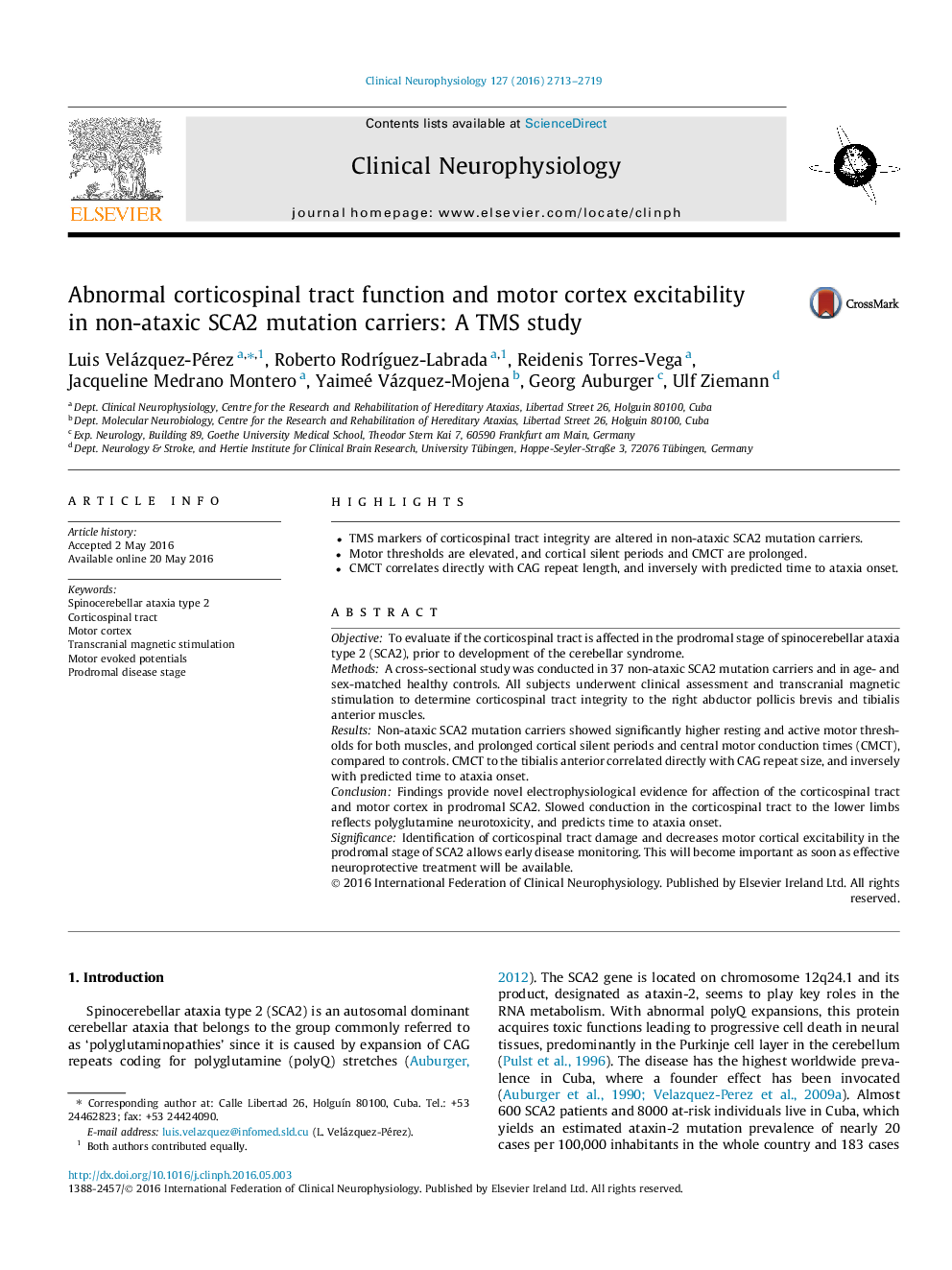| Article ID | Journal | Published Year | Pages | File Type |
|---|---|---|---|---|
| 3042663 | Clinical Neurophysiology | 2016 | 7 Pages |
•TMS markers of corticospinal tract integrity are altered in non-ataxic SCA2 mutation carriers.•Motor thresholds are elevated, and cortical silent periods and CMCT are prolonged.•CMCT correlates directly with CAG repeat length, and inversely with predicted time to ataxia onset.
ObjectiveTo evaluate if the corticospinal tract is affected in the prodromal stage of spinocerebellar ataxia type 2 (SCA2), prior to development of the cerebellar syndrome.MethodsA cross-sectional study was conducted in 37 non-ataxic SCA2 mutation carriers and in age- and sex-matched healthy controls. All subjects underwent clinical assessment and transcranial magnetic stimulation to determine corticospinal tract integrity to the right abductor pollicis brevis and tibialis anterior muscles.ResultsNon-ataxic SCA2 mutation carriers showed significantly higher resting and active motor thresholds for both muscles, and prolonged cortical silent periods and central motor conduction times (CMCT), compared to controls. CMCT to the tibialis anterior correlated directly with CAG repeat size, and inversely with predicted time to ataxia onset.ConclusionFindings provide novel electrophysiological evidence for affection of the corticospinal tract and motor cortex in prodromal SCA2. Slowed conduction in the corticospinal tract to the lower limbs reflects polyglutamine neurotoxicity, and predicts time to ataxia onset.SignificanceIdentification of corticospinal tract damage and decreases motor cortical excitability in the prodromal stage of SCA2 allows early disease monitoring. This will become important as soon as effective neuroprotective treatment will be available.
